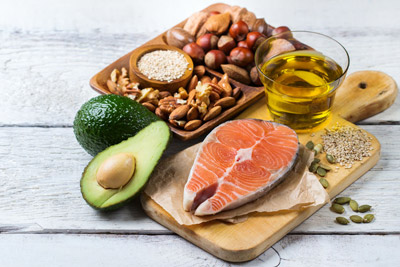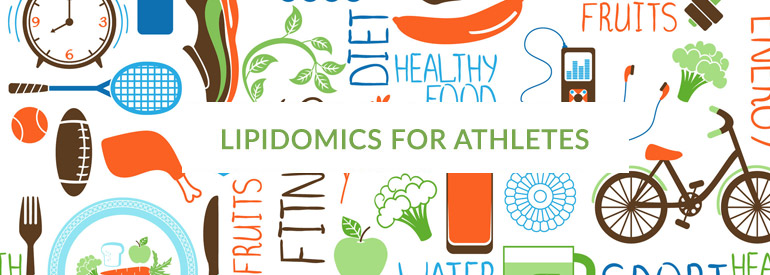
LIPIDOMICS and POST PARTUM DEPRESSION


Postpartum depression, get to know it and how to deal with it
Pregnancy is one of the most beautiful and expected moments for many women, the arrival of a new life and the direct perception of the future become a happy expectation for the woman , but the period after childbirth does not always represent a light period without frustrations and anxieties, which indeed they arise unexpectedly.
The Ministry of Health, in the Brochure: “Recommendations for your health and that of the child to come” defines the Post Partum Depression (PPD) as follows:
“It is a complex disorder that affects, with varying degrees of severity, from 7 to 12% of new mothers and generally begins between the 6th and 12th week after the birth of the child.
The woman feels sad for no reason, irritable and easy to cry, not good enough for the commitments that await her. In addition, a recurring feeling among new mothers who are faced with this problem is shame mixed with guilt. It is good to remember this: nobody are born parents, they become one.
The DPP represents not only a public health problem of considerable importance, given the social and employment implication it can cause, but above all an interference in the establishment of the mother-child bond. In fact, 67% of depressed mothers report difficulties in interaction and attachment. The reciprocity has been recognized as essential, capable of preventing the long-term consequences on the cognitive, social and emotional development of the child “
Everything points to the emotional sphere and brain functioning, so it was important to conduct research and establish what happens in the expectant mother, identifying that deficiencies may occur in the 9 months of pregnancy that make the balance of the maternal nervous tissue precarious1.
What did the research establish?
Pregnant and postpartum women in most industrialized countries have a high chance of being deficient in Omega-3 for two general reasons:
- because in the usual diet there was a low presence of foods containing omega-3 (fish, oilseeds such as flax and hemp, walnuts, spinach etc…) 2 essential fatty acids necessary for the functioning of all tissues (in particular the nervous one), and obviously even more important for fetal growth;
- because in the first two trimesters of pregnancy the biosynthesis and the accumulation of fats which are essential for building the cells of the fetal tissues are increased 3 and it is extremely important that the quality of these fats is well balanced precisely for the construction needs of all types of tissues.
Studying Australian mothers, dr. Rees and his team (2005)4, observed that babies need about 67 mg per day of omega-3 DHA for their development, but Australian mothers consumed around 15 mg per day – well below the required quantity. In fact, the various international food and health agencies indicate the omega-3 DHA quota of 200 mg / day as the reference daily intake, to be ensured during pregnancy (EFSA Journal, 2010). Mothers from countries like Japan, Korea or Norway, where fish consumption is naturally high, consume around 1,000 mg of DHA per day.5
The “shifting” effect of fats from maternal tissues to the fetus, in the event of a deficiency of essential fatty acids, will lead to an emptying of the quotas of essential fatty acids, precisely of the mother’s omega-3 type, including DHA, during pregnancy. This has been related to the increase in the incidence of depression that arises in the postpartum period6.
The influence of nutrition and intake of PUFA Omega-3 and Omega-6
 Nutrition during pregnancy is a fundamental aspect; all the basic nutrients for the organism being to be formed must be provided by the mother, without neglecting the fact that a part must keep it to herself, for the proper functioning of her organism. Unfortunately, industrial food today does not help for a correct balance of nutrients in the dishes that we bring to the table.
Nutrition during pregnancy is a fundamental aspect; all the basic nutrients for the organism being to be formed must be provided by the mother, without neglecting the fact that a part must keep it to herself, for the proper functioning of her organism. Unfortunately, industrial food today does not help for a correct balance of nutrients in the dishes that we bring to the table.
Speaking of fats, considering the quantity and quality of the fatty acids introduced with the diet, the contributions have changed, and not for the better. Evaluating four generations, it can certainly be said that from the great-great-grandmother to the current mother all eating habits have considerably changed, and in particular it is known that saturated and omega-6 fats have increased, while monounsaturated and omega-3 fats have decreased7. Remember that omega-6 and omega-3 polyunsaturated fats (PUFA) are defined essential, because they must be taken in the diet and cannot be synthesized autonomously by the body. It is clear that if the recruitment promotes only one of the two types of PUFA, the situation at the cellular level is already in serious imbalance.
Especially for the cell formation required by fetal growth in the 9 months of pregnancy, an excellent availability of all types of fats must be ensured, especially those that cannot be prepared independently. Science has clarified that if the diversity of fats is not ensured, dysfunctions and problems occur at the level of all tissues, of processes such as recognition and immunity, of the metabolism and functioning of all systems, and this is a crucial topic for well-being. and the subsequent growth of the newborn 8. It is also worth mentioning that the fatty acids belonging to the omega-6 and omega-3 families play balanced and complementary roles, for this reason they must always be in a correct relationship with each other, which is ensured precisely by the balance in the supply. The omega-6 PUFAs’ are implicated in the inflammatory response processes and are counterbalanced by the omega-3 PUFAs’, implicated in the corresponding inflammatory resolution and neuroprotection processes 9.
DHA, the mother’s and unborn child’s friend
During the last trimester of pregnancy, the levels of proinflammatory cytokines, deriving from Arachidonic Acid (PUFA Omega-6), naturally increase in anticipation of childbirth. Inflammation has a positive purpose: to help the body prepare for labor. Other postpartum stressors, such as sleep deprivation, can also stimulate the production of proinflammatory cytokines, and it is necessary to know that there is a good presence of acids in the body omega-3 fats, with whom to counteract the reactivity effects of omega-6.
The omega-6 and omega-3 balance especially at the nervous tissue level is also necessary to obtain beneficial effects of the two fatty acids Arachidonic acid (omega-6) and DHA (omega-3) which are present in equal concentration in the neuron 10, a condition that keeps the response of these cells under control and avoids the process of neuro inflammation. The condition of neuro inflammation can be a problem not only for the correct neuronal development of the child but also for the condition of postpartum depression of the mother.
The witness of a mother who has made FAT PROFILE and a personalized lipid integration:
“As soon as I discovered being pregnant, I was” invaded “by a sense of responsibility that prompted me to refine and personalize the lifestyle, especially the food habits. I have made the chose that from that moment on I had to start making choices with the awareness that what I was doing had an impact on my child and his genesis and future growth. I could not be “selfish” in front of the phrase that the specialist who followed me, lipidomic referent, told me: do you know that at this moment of your life you are forming billions of cells? And that in order to be functional, cells must feed themselves on balanced components?
Well, it all started from these observations … what I was doing for myself, would inevitably affect my child. During the whole pregnancy I have followed the food directions literally (including taking supplements, customized month by month); in the post-partum period, with all the physical and psychological difficulties that a mother faces during her first pregnancy, I was able to quickly return to my initial condition and to face moments of fatigue and stress, always keeping a smile and adrenaline (typical of moments when you are happy and elated). “
Bibliography:
(1) Opuscolo: “Raccomandazioni per la tua salute e per quella del figlio che verrà”. MinSal 2017
(2) GBD 2017 Diet Collaborators*. Health effects of dietary risks in 195 countries, 1990–2017: a systematic analysis forthe Global Burden of Disease Study 2017. Lancet 2019; 393: 1958–72
(3) Emilio Herrera and Henar Ortega-Senovilla, “Lipid Metabolism During Pregnancy and its Implications for Fetal Growth”, Current Pharmaceutical Biotechnology (2014) 15: 24.
(4) Rees AM, Austin MP, Parker G. Role of omega-3 fatty acids as a treatment for depression in the perinatal period. Aust N Z J Psychiatry 2005; 39:274–80.
(5) Kendall-Tackett, K. A. Long-chain omega-3 fatty acids and women’s mental health in the perinatal period. Journal of Midwifery and Women’s Health, 55(6), 561–567. (2010)
(6) Levant B. (2011). N-3 (omega-3) Fatty acids in postpartum depression: implications for prevention and treatment. Depression research and treatment, 2011, 467349.
(7) Simopoulos AP. The importance of the omega-6/omega-3 fatty acid ratio in cardiovascular disease and other chronic diseases. Exp Biol Met. (2008) doi: 10.3181/0711-MR-311
(8) Kabaran S. Besler HT. Do fatty acids affect fetal programming? J Health Popul Nutr. 2015 Aug 13;33:14
(9) Calder, P.C. Omega-3 Fatty Acids and Inflammatory Processes. Nutrients (2010) 2, 355-374.
(10) Bazinet et al;. Polyunsaturated fatty acids and their metabolites in brain function and disease. Nature Reviews Neuroscience (2014) doi:10.1038/nrn3820
Article edited by the Lipinutragen Editorial Board
Photo: 123RF Archivio Fotografico: 69978211 ©Antonina Vlasova /123rf.com | 137184772 ©nicoletaionescu /123rf.com
- On 15 May 2020



